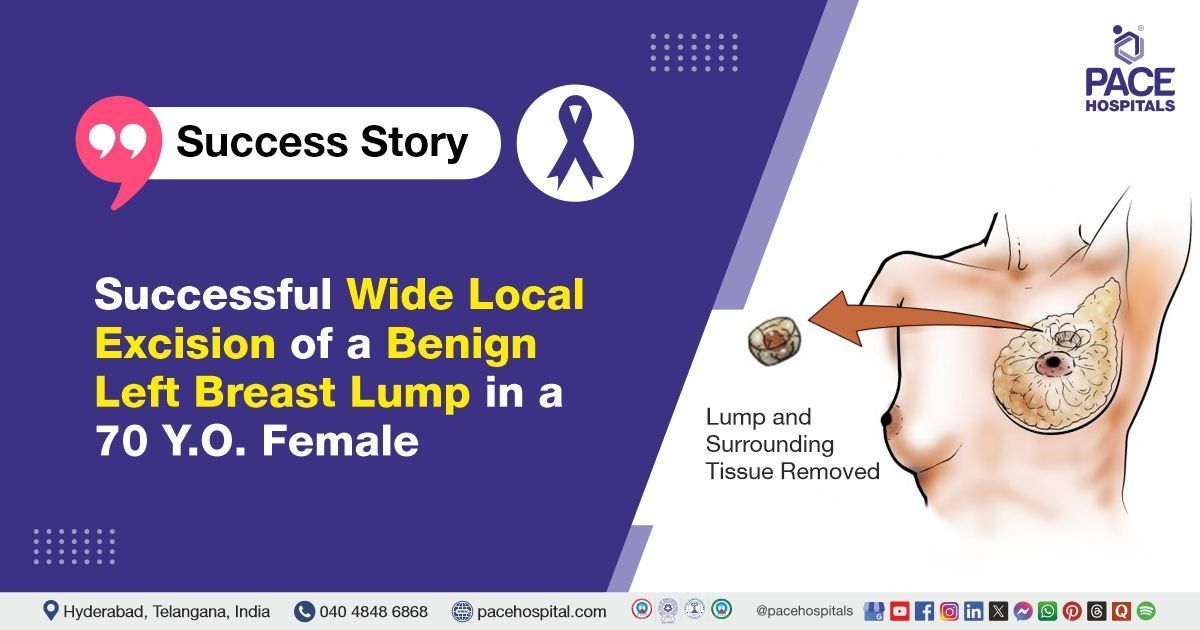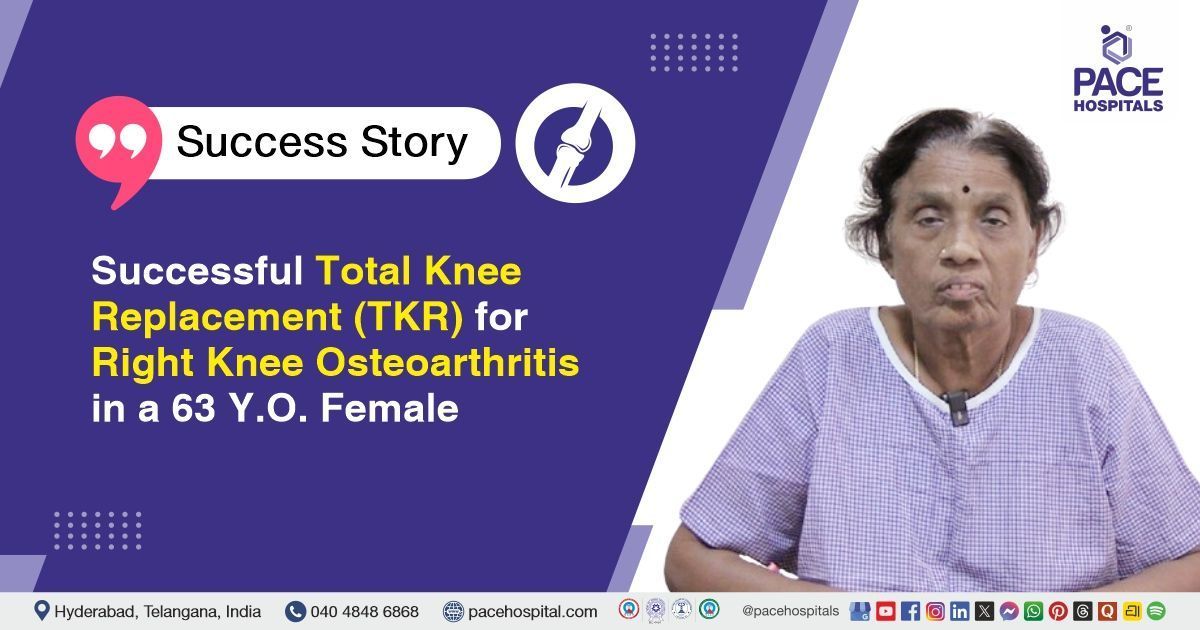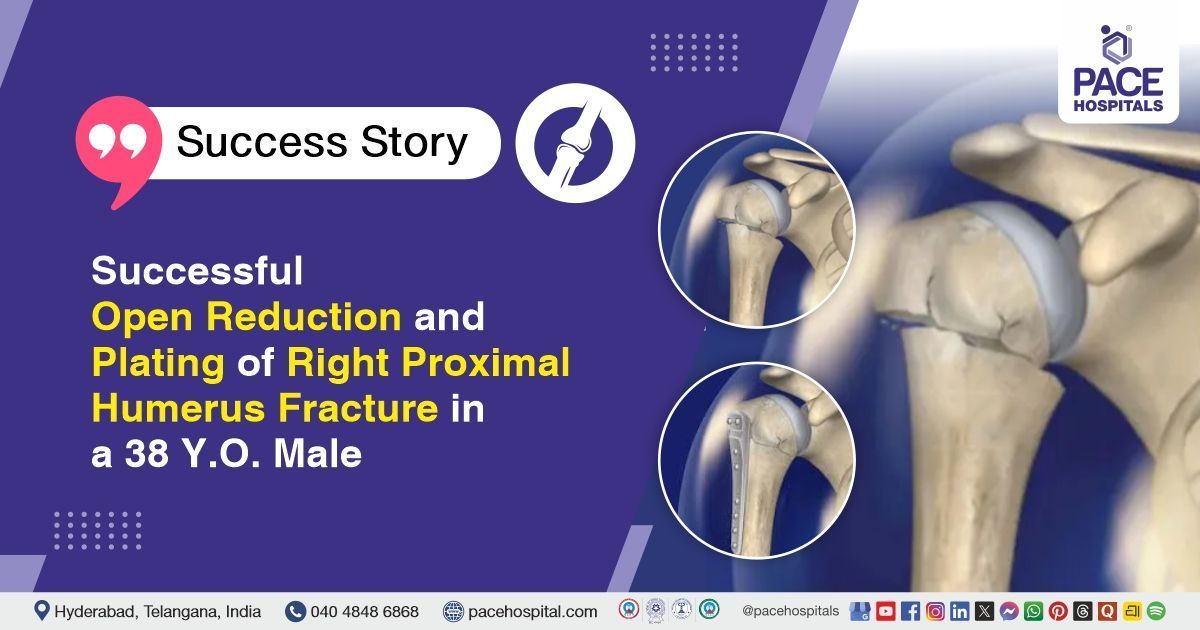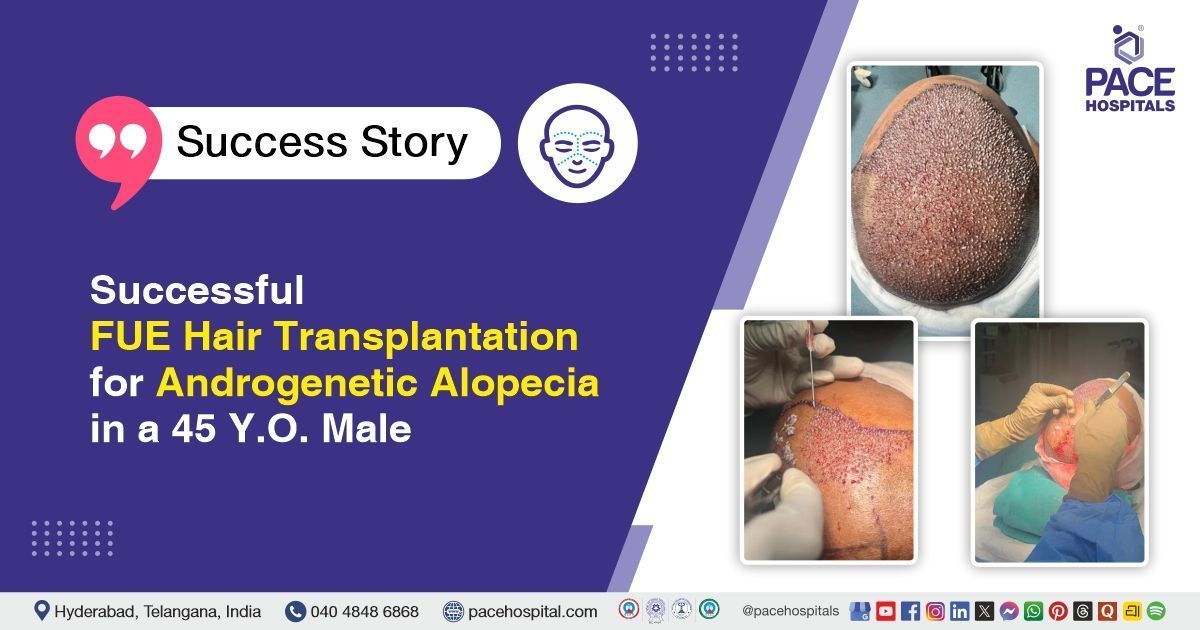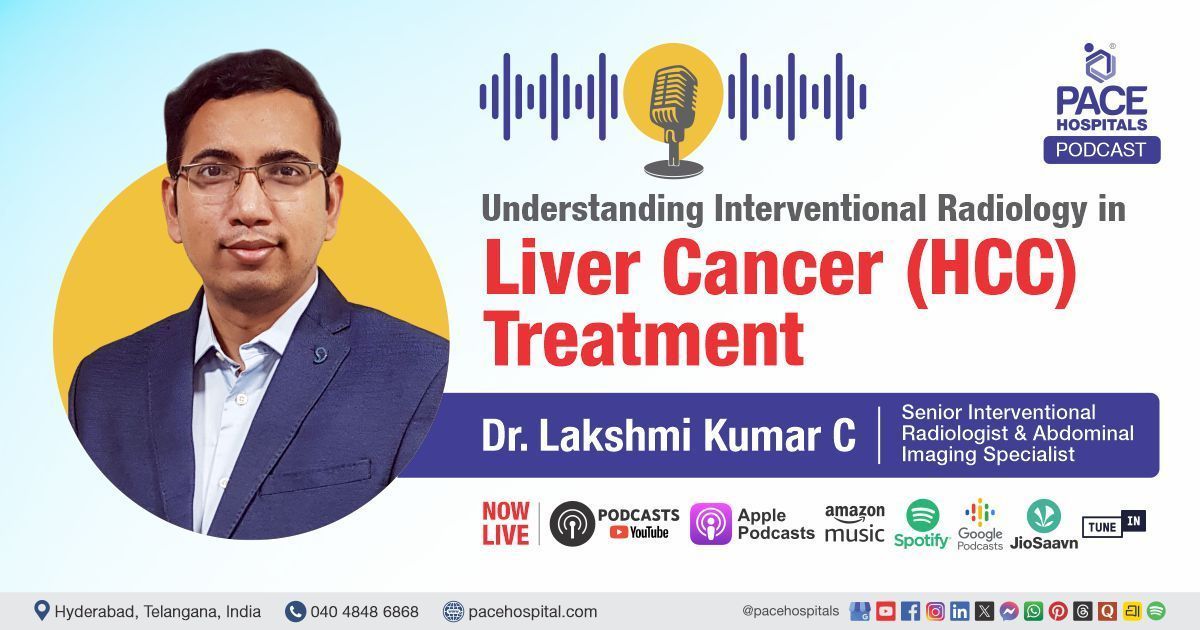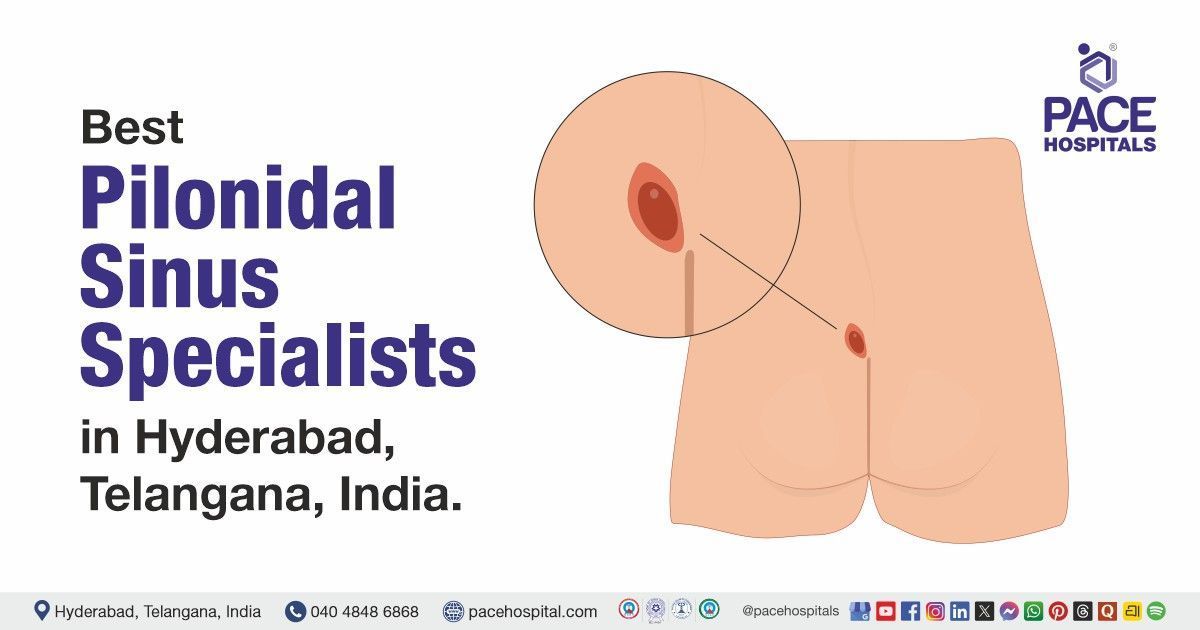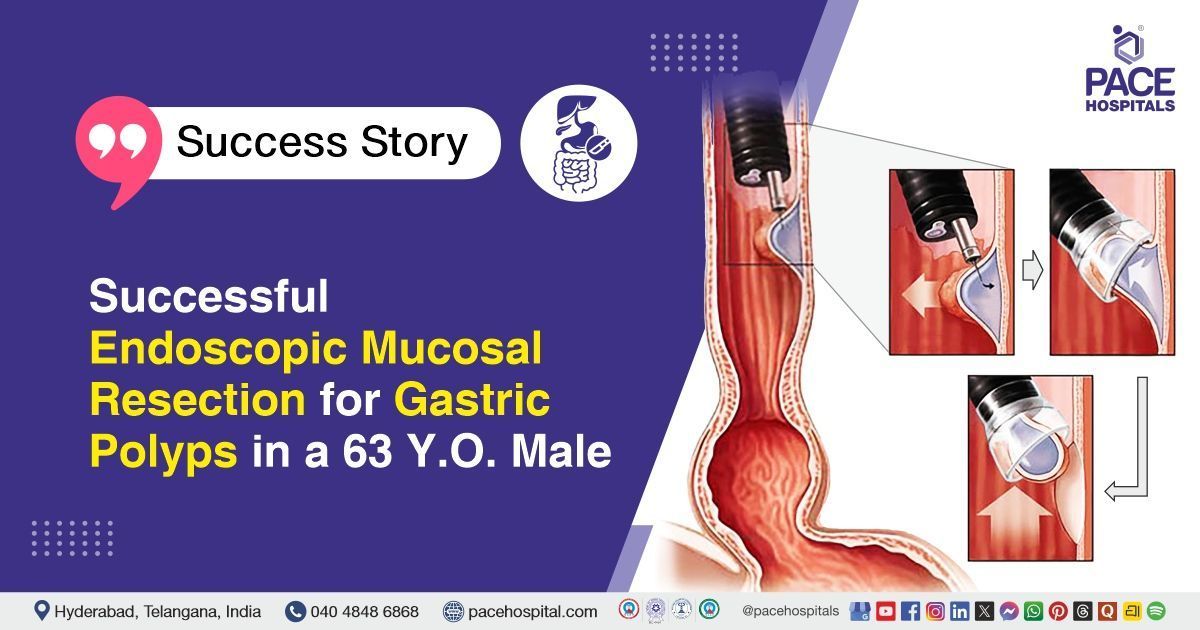Successful Wide Local Excision of a Benign Left Breast Lump in a 70-Y.O Female
PACE Hospitals
PACE Hospitals' expert Oncology team successfully performed a
Wide Local Excision on a 70-year-old female patient who had presented with a painful, mobile lump in her left breast for the past month. The surgery was performed to remove the lump in the left breast, effectively relieving the patient's symptoms and improving the overall quality of life.
Chief Complaints
A 70-year-old female patient with a
body mass index (BMI) of 22.2 presented to the Oncology Department at
PACE Hospitals, Hitech City, Hyderabad, with a chief complaint of a painful, mobile lump in her left breast that had persisted for one month and had begun to interfere with her daily activities.
Past Medical History
The patient had a history of hysterectomy in 2005 for a fibroid uterus, after which she became postmenopausal and amenorrheic. Her obstetric history includes a total of four pregnancies, with an obstetric score of T2P4A2L2, indicating two term births, four pregnancies, two abortions, and two living children. And the patient has no known drug allergies.
On Examination
The patient was conscious, coherent, and oriented, with a mild increase in blood pressure. On cardiovascular examination, S1 and S2 heart sounds were present. Central nervous system examination revealed no focal neurological deficits. Respiratory system examination showed bilateral air entry with normal vesicular breath sounds. The abdomen was soft and non-tender.
On local examination of the left breast, a 2 × 1 cm lump was palpated in the upper outer quadrant, located retroareolarly and proximally close to the nipple. The lump was mobile, painful on deep palpation, and not fixed to the skin. No skin changes or nipple discharge were noted. The left axilla was free of palpable lymphadenopathy. The right breast and axilla were normal on examination.
Diagnosis
Following the clinical examination, the oncology team conducted a thorough evaluation, which included a detailed review of the patient’s medical and surgical history. To assess the nature of the breast lump, diagnostic investigations were performed. Fine Needle Aspiration Cytology (FNAC) confirmed the presence of a benign breast lump. Ultrasonography (USG) of the left breast classified the lesion as BI-RADS II, indicating a benign finding with no suspicion of malignancy. Routine blood investigations revealed mild anaemia, with a low haemoglobin level indicating slight anaemia, and neutrophil predominance on the differential count. Renal function tests and electrolytes were within normal limits. A 2D echocardiogram showed mild concentric left ventricular hypertrophy and grade I diastolic dysfunction, but overall good left and right ventricular function, with an ejection fraction of 60%. No valvular abnormalities or intracardiac masses were identified. The patient was diagnosed with a benign left breast lump with a cystic component.
Based on the confirmed diagnosis, she was advised to undergo
Breast Lump Treatment in Hyderabad, India, under the expert care of the Oncology Department, ensuring accurate diagnosis, effective treatment, and optimal recovery.
Medical Decision Making
After consultation with Dr. Ramesh Parimi, a surgical oncologist, a comprehensive evaluation was conducted to determine the most appropriate diagnostic and therapeutic approach for the patient with a Benign left Breast Lump exhibiting a Cystic component. Clinical examination, imaging studies including ultrasound, and Fine Needle Aspiration Cytology (FNAC) confirmed the benign nature and location of the lump in the upper outer quadrant of the left breast.
It was determined that the patient had a benign lump in the upper outer quadrant of the left breast with a cystic component. Given the presence of localized pain and the need to rule out malignancy definitively, wide local excision of the lump with intraoperative frozen section analysis was identified as the most appropriate intervention to ensure complete removal and accurate histopathological diagnosis.
The patient and her family were counselled about the patient's condition, including the associated risks, complications, and benefits. They were also informed about the necessity of surgical intervention to prevent future complications and ensure optimal outcomes.
Surgical Procedure
Following the decision, the patient was scheduled for Breast Lump Excision Surgery in Hyderabad at PACE Hospitals, under the expert supervision of the Oncology Department.
The following steps were carried out during the procedure:
- Preoperative preparation and anaesthesia: The patient was administered general anaesthesia and positioned appropriately to allow optimal surgical access to the left breast.
- Surgical exposure: A precise incision was made over the upper outer quadrant of the left breast, closely aligned with the retroareolar region where the lump was located. The surrounding tissue was carefully dissected to expose the lesion.
- Lump excision and frozen section analysis: The identified 2 × 1 cm lump, along with a margin of surrounding tissue, was excised in its entirety. Intraoperative frozen section analysis was performed, which confirmed the absence of invasive carcinoma, indicating a benign lesion.
- Haemostasis and closure: Meticulous haemostasis was achieved to control bleeding. A surgical drain was placed, and the wound was closed in layers to ensure proper healing and reduce the risk of fluid accumulation or infection.
Postoperative Care
After surgery, the patient's postoperative recovery was uneventful, and she was monitored closely in the surgical intensive care unit to ensure stability. She was transferred to the general ward once her condition had stabilized. During her hospital stay, she received intravenous antibiotics to prevent infection, analgesics for pain relief, antiemetics to control nausea, and gastric protectants.
Discharge Medications
Upon discharge, the patient was prescribed a medication regimen to support postoperative recovery and minimize complications. This regimen included proton pump inhibitors (PPIs) to prevent gastrointestinal irritation and antibiotics to reduce the risk of surgical site infection, analgesics to relieve pain and, additionally, an antifibrinolytic agent was prescribed to control bleeding by stabilizing blood clots and preventing their breakdown, especially useful post-surgery to minimize blood loss.
Emergency Care
The patient was informed to contact the emergency ward at PACE Hospitals in case of any emergency or development of symptoms such as fever, sudden onset of arm or shoulder pain or swelling, increased redness, swelling, or discharge from the wound.
Review and Follow-up Notes
The patient was advised to schedule a follow-up appointment with the Oncologist in Hyderabad at PACE Hospitals, 3 days after discharge.
Conclusion
This case highlights the effectiveness of wide local excision with intraoperative frozen section in the management of a benign left breast lump with a cystic component. The procedure enabled complete removal of the lesion, confirmed the absence of invasive carcinoma, relieved the patient’s symptoms, and supported a smooth postoperative recovery, thereby contributing to the patient’s overall health and well-being.
The Significant Role of Frozen Section in Oncologic Breast Surgery
The frozen section is a rapid intraoperative diagnostic technique that enables pathologists to evaluate tissue samples during surgery. Under the guidance of the surgical oncologist, it provides immediate histopathological confirmation, assisting in real-time surgical decisions. In breast surgery, especially when malignancy is suspected, this tool is crucial for determining the nature of the lesion. In this case, an
Oncologist / Cancer specialist utilized the frozen section to confirm the absence of invasive carcinoma, thereby avoiding unnecessary extensive surgery such as a mastectomy. This helped ensure oncological safety while minimizing surgical morbidity. The oncologist’s expertise was key in integrating pathology findings with clinical judgment, leading to precise and patient-centered care. Overall, the frozen section is a vital asset in modern oncologic surgery for balancing diagnostic certainty with optimal treatment planning.
Share on
Request an appointment
Fill in the appointment form or call us instantly to book a confirmed appointment with our super specialist at 04048486868

